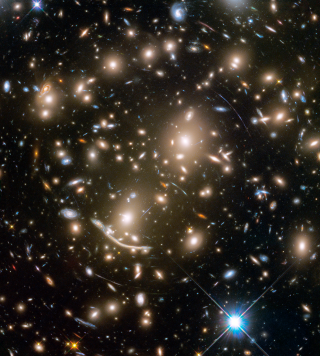Bibcode
Eliche-Moral, M. C.; González-García, A. C.; Balcells, M.; Aguerri, J. A. L.; Gallego, J.; Zamorano, J.; Prieto, M.
Referencia bibliográfica
Astronomy and Astrophysics, Volume 533, id.A104
Fecha de publicación:
9
2011
Revista
Número de citas
71
Número de citas referidas
67
Descripción
Context. Observations have shown that inner discs and rings (IDs and
IRs) are not preferably found in barred galaxies, which indicates that
their formation may differ from that described by the traditional
bar-origin scenario in many cases. In contrast, the role of minor
mergers in producing these inner components (ICs), while often invoked,
is still poorly understood. Aims: We investigate the capability
of minor mergers to trigger the formation of IDs and IRs in spiral
galaxies through collisionless N-body simulations. Methods: We
run a battery of minor merger simulations in which both primary and
secondary galaxies are modelled as disc-bulge-halo galaxies with
realistic density ratios. Different orbits and mass ratios are
considered, as well as two different models for the primary galaxy (a
Sab or Sc). We then perform a detailed analysis of the morphology,
structure, and kinematics of the ICs resulting from the minor merger.
Results: All the simulated minor mergers develop thin ICs out of
satellite material, supported by rotation. A wide morphological zoo of
ICs are obtained (including IDs, IRs, pseudo-rings, nested IDs, spiral
patterns, and combinations of them), but all have structural and
kinematical properties similar to those observed. The sizes of the
resulting ICs are comparable to those observed in real galaxies with the
adequate scaling. The existence of the resulting ICs can be deduced from
the features that they imprint in the isophotal profiles and kinemetric
maps of the final remnant, as in many real galaxies. Weak transitory
oval distortions appear in the remnant centre in many cases, but none of
them develops a noticeable bar. The realistic density ratios used in the
present models ensure that the satellites experience more efficient
orbital circularization and disruption than in previous studies.
Combined with the disc resonances induced by the encounter, these
processes produce highly aligned co- and counter-rotating ICs at the
remnant centre. Conclusions: Minor mergers are an efficient
mechanism for forming rotationally-supported stellar ICs in spiral
galaxies, without requiring either strong dissipation or the development
of noticeable bars. The present models indicate that minor mergers can
account for the existence of pure-stellar old ICs in unbarred galaxies,
and suggest that their role must have been crucial in the formation of
ICs and much more complex than just bar triggering.
Figures 12-16 are available in electronic form at http://www.aanda.org
Proyectos relacionados

Evolución de Galaxias en Cúmulos
Las estructuras en el Universo, a todas las escalas de masa, se han formado de una forma jerárquica y principalmente producidas por fusiones de galaxias. Sin embargo, esta formación jerárquica de las galaxias está modulada por el entorno en el cual se crean y evolucionan. Mientras que las galaxias de campo presentan una evolución pasiva, los
Jairo
Méndez Abreu

Huellas de la Formación de las Galaxias: Poblaciones estelares, Dinámica y Morfología
Bienvenida a la página web del g rupo de investigación Traces of Galaxy Formation. Somos un grupo de investigación amplio, diverso y muy activo cuyo objetivo principal es entender la formación de galaxias en el Universo de una manera lo más completa posible. Con el estudio detellado de las poblaciones estelares como bandera, estamos constantemente
Anna
Ferré Mateu